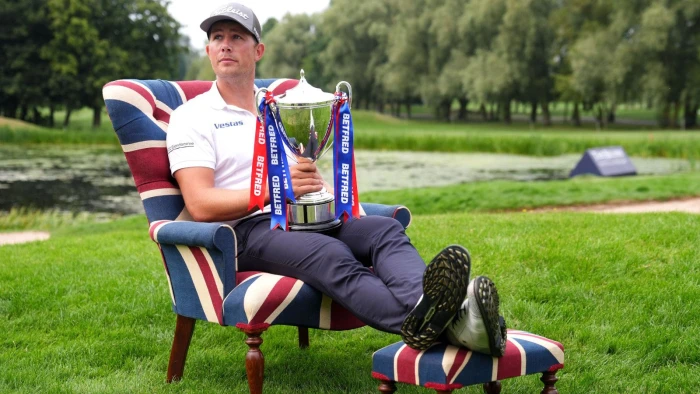The ultimate golf training guide for beginners

Golf ball and driver
Maybe you've been wondering what it takes to be one of those elegant golfers you see on TV or in your neighbourhood.
Golfing takes sacrifice and dedication. Still, these two may not be at the top of the table if you don't have the correct training elements.
Golf is fun, but you can only enjoy it when you are adequately trained. With this guide, you can relate to the above statement. It's never as complicated as it appears. You only need an experienced trainer and will be the best golfer in no time.
Here is a comprehensive guide to golf training to become the best.
The basics
To become a golfer, you must learn the basics of golf, which are the foundation for what lies ahead. In golfing, these include alignment, which guarantees you send the ball where it's supposed to be.
Stance refers to how the ball is positioned, the golfer's posture, and alignment. A stable stance delivers an accurate shot, and with time, your game improves. The last golfing basics you should learn is the grip, which refers to how the club sits in the hands. Different grip types include baseball, overlap, and interlock.
The golf swings
Golf swings are player moves to hit the ball in a particular direction. There are different technicalities that golfers must grasp. Your swing can only be great after learning the above three basics. The backswing is the most common, whereby the player lifts the club from the ground and positions it behind their head and back.
Conversely, the downswing involves gently pulling the club head away from the ball and back to hit. Your trainer should take you through the tips to make a smooth swing, like the position of your legs and knees and the rest of your body.
Follow through with both swings, discussing how far you should take the club on your first move. Here, the trainer will sharpen techniques for focusing on the ball, stability, and distance.
Golf club trade-in
In a golf club trade in, you can exchange unused or old golf clubs for new ones or money to buy them. It is an excellent idea for trainees as upgrading exposes them to better clubs suited to the specific level of training.
The improved clubs are generally of desirable quality, having undergone critical inspection and valuation. You can also get retailer feedback when trading in an old club for an upgraded one, promoting outstanding performance.
Stroke mechanisms
The third approach in the golf training guide is the stroke mechanism approach. These determine how the ball will be delivered to the right hole. The three main mechanisms include pitching, chipping, and putting.
The former is about having an exceptional spin and trajectory while chipping seeks to address touch and finish. Putting propels the golf ball to the hole through a putter. The ideal stroke mechanisms incorporate speed, concentration, and movement.
Mental game
Golf is more of a mind game than a physical one. Your concentration will be the key to every hit you make, substantially impacting the final results. As a developing golfer, you should learn how to focus on what's ahead of you (the game) and nothing else.
That way, your performance will improve with time. Self-confidence and motivation are also necessary, especially for beginners. Once you've learned golf, nothing should bring you down. Be resilient to challenges and maintain an optimistic mindset despite pressure.
Start early enough
Another tip for golf training is to start early enough. There's no specific age at which you cannot get started with golf. However, you'd be safer if you enrolled in training as soon as the idea kicks in. Procrastinating what your heart and mind have already settled on would only draw you further away from the dream.
Be consistent
Consistency is the foundation of success, which you need as a young golfer to aim higher. Do what it takes to maintain a regular schedule on the course, even if it's drafting a timetable. The training may require a great sacrifice of time, but it will pay off.
Stay fit
All the training may be in vain when you're not physically fit. Swings, basics, and strokes can be perfected with a flexible and active body. Therefore, perform several exercises before and after the training session to maintain momentum. Your coach can recommend the best exercises.
Compete with yourself
There are many other golfers on the course (unless the training happens on private grounds). Some are just beginners like you. Others have learned the basics and are doing well, not to mention the experts!
You can quickly lose yourself if you compare yourself to everyone else, even if you are all enrolled at different times. The only competitor on the course is you. Try to outdo yourself every day when you work out.

